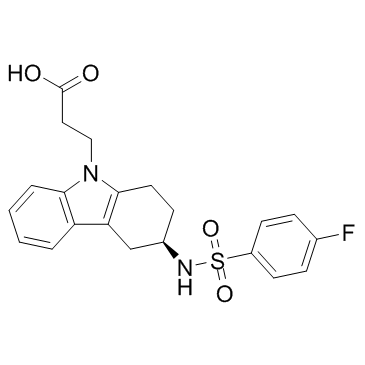Successful treatment of eosinophilic otitis media using ramatroban: report of two cases.
Tetsuro Wada, Isao Uemaetomari, Hidekazu Murashita, Tadamichi Tobita, Shigeki Tsuji, Keiji Tabuchi, Hideki Okubo, Akira Hara
Index: Auris. Nasus. Larynx. 33(4) , 455-60, (2006)
Full Text: HTML
Abstract
The pathogenesis of eosinophilic otitis media is not yet fully understood. The purpose of this paper is to describe the clinical course of our two patients with eosinophilic otitis media and to discuss the pathogenesis and treatment of this intractable condition.Two cases of eosinophilic otitis media were treated with ramatroban.The middle ear effusion has been well controlled in both patients for more than 1 year with minimal corticosteroid therapy.Our experience suggests that the pathogenesis of eosinophilic otitis media is related to the pharmaceutical effects of ramatroban, i.e., inhibition of the thromboxane A2 receptor (TP) and the chemoattractant receptor-homologous molecule expressed on Th2 cells (CRTH2).
Related Compounds
| Structure | Name/CAS No. | Molecular Formula | Articles |
|---|---|---|---|
 |
Ramatroban
CAS:116649-85-5 |
C21H21FN2O4S |
|
Interactive effect of histamine and prostaglandin D2 on nasa...
2007-01-12 [Eur. J. Pharmacol. 554(2-3) , 229-34, (2007)] |
|
IL-16 variability and modulation by antiallergic drugs in a ...
2009-01-01 [Int. Arch. Allergy Immunol. 149(4) , 315-22, (2009)] |
|
Prophylactic effects of the histamine H1 receptor antagonist...
2011-01-01 [Biol. Pharm. Bull. 34(4) , 507-10, (2011)] |
|
Effects of fexofenadine hydrochloride in a guinea pig model ...
2005-10-01 [Pharmacology 75(2) , 76-86, (2005)] |
|
Involvement of cyclooxygenase-2 in allergic nasal inflammati...
2006-11-01 [Int. Immunopharmacol. 6(11) , 1736-42, (2006)] |